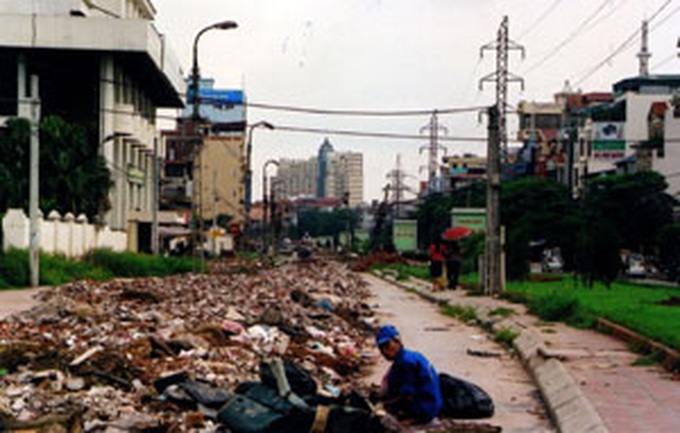Hanoi has approved spending more than VND107 trillion (US$5.1 billion) on collecting, classifying and properly treating solid waste in a bid to reduce environmental pollution and make the capital city greener by 2030.
 |
| Solid waste builds up as the capital approves a new treatment plan. |
The city will also build 29 dumping sites for construction and mud waste. Money will be assigned to the projects from the State budget, official development assistance funds and build-operate-transfer loans.
A report on the environment in Vietnam from the Ministry of Natural Resources and Environment released last August showed that solid waste in urban, industrial and economic areas has increased on average 10 percent annually. Of this amount, 46 percent is from urban areas, 17 percent from industrial production and the rest from rural areas and traditional craft villages.
By 2015, solid waste is forecast to reach 44 million tonnes. Up to 25 percent of that amount is expected to be hazardous.
Hoang Duong Tung, vice head of the ministry's Vietnam Environment Administration told Kinh te & Do thi (Economy & Urban) newspaper that the technology for treating solid waste is currently substandard as most of it is wrongly categorised as being domestic waste and so buried rather than being treated correctly.
Currently, on average, each city in the country has one dumping site for all kinds of waste. Hanoi and HCM City have four and five respectively.
However, only 16 of the country's 98 dumping sites follow standard procedures for burying waste.
Chairman of the Vietnam Association for the Conservation of Nature and the Environment, Nguyen Ngoc Sinh, said that urban environmental companies remained weak, especially for processing toxic waste.
Experts have suggested that seeking investment and expanding waste treatment areas so that they are larger and include new technology would be the best solution to the problems.
In Hanoi, around 5,000 tonnes of solid waste is discharged every day. There are three solid waste incinerators in the city with a capacity of destroying 120-200 kilos per hour.
